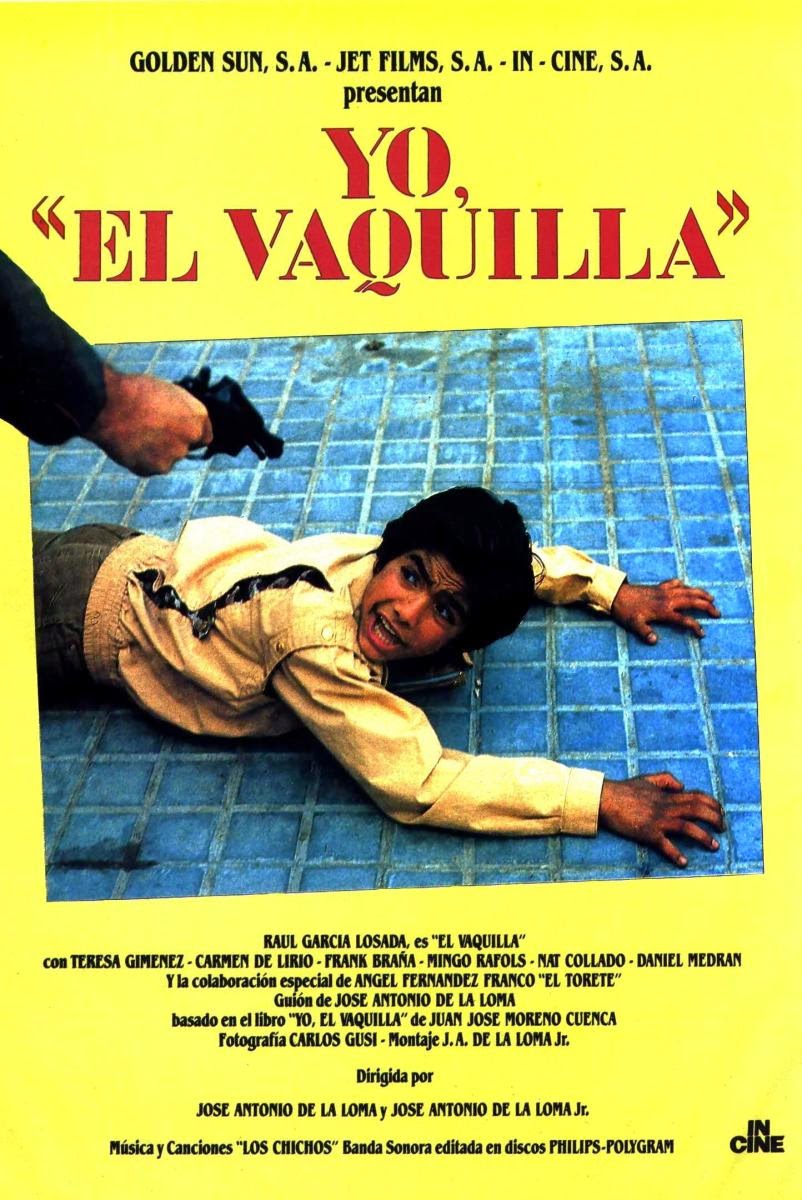
Mechoulam during a lecture, with the structure of Tetrahydrocannabinol behind him, circa 1964. Courtesy of Zach Klein, from his documentary 'The Scientist'
This article originally appeared in the Colombian edition of VICE Magazine.
In 1980, a team of investigators from the Sao Paulo Medicine Faculty of Santa Casa published a study that should have changed the lives of 50 million epilepsy sufferers around the world—but never did.
The findings of the investigation, carried out alongside the Hebrew University in Jerusalem, were, at the very least, encouraging. Researchers administered daily doses of 300 milligrams of cannabidiol, the most important non-psychoactive component in marijuana, to a group of eight epileptic patients. Four months into the treatment, four of them stopped having seizures and three others saw the frequency of their seizures decrease.
"Who cared about our findings? No one!" says Raphael Mechoulam, frowning from his sofa. "And that's despite many of the epilepsy patients being kids who have 20, 30, 40 seizures a day. And what did they do? Nothing! For 30 years, no one has used cannabis to treat epilepsy."
I'd been searching for Mechoulam for a year. Just like anyone else interested in medicinal cannabis, I'd formed this mythical image of him, like a sort of Karl Marx or Syd Barrett figure, a revolutionary mind who defies the conventions of his time and alters, forever, our perception of the world. A few months ago, Norton Arbeláez, the Colombian businessman who designed the medicinal cannabis regulatory system in Colorado, told me that this organic chemistry expert's investigations had added scientific weight to his regulatory lobbying in the United States. Meanwhile, Juan Manuel Galán, a senator from Colombia's Liberal Party, told me last November that he had traveled to Jerusalem to meet the scientist in his laboratory while he was working on the draft for his proposal to have medicinal marijuana legalized, which was approved by the Colombian Senate in December and will be debated in the House of Representatives this March.
Everyone I spoke to about the scientist agreed on one thing: Mechoulam is the father of modern cannabis.

Mechoulam at his current lab, at the Hebrew University, Jerusalem. Photo by Elior Rave
The 85-year-old lives in a small, sober but elegant apartment in West Jerusalem, where the marble buildings and the trees in the front gardens make you forget momentarily that Israel is a military state on a permanent state of alert. Every day he drives his silver Peugeot to his lab on the outskirts of the city, where he's spent the last five decades deciphering the chemical mysteries of marijuana, and more importantly, the way in which the human body interacts with the compounds found in the plant. Raphie, as his colleagues like to call him, isolated and deciphered the molecular structure of the "cannabinoids," the chemical compounds in marijuana. In particular, tetrahydrocannabinol (THC), the molecule responsible for the cannabis high, and cannabidiol, the main non-psychoactive compound of the plant, carrier of countless medicinal qualities.
At the start of the 20th century, with the gradual prohibition of marijuana in the US, the modern world turned its back on the researching of a sacred and powerful plant used by doctors, shamans, and druids for over three millennia. The Pen-T'sao Ching, the oldest pharmacopoeia in existence, records the use of cannabis in China around 2700 BC as treatment for rheumatic pain, constipation, female reproductive disorders (such as endometriosis), and malaria. Similarly, the father of Chinese surgery, Hua Tuo, developed an anesthetic composed of wine and weed during the first century BC. Similar accounts appear in documents and witness accounts from India, the Middle East, Africa, and even Europe, where in 1838, William Brooke O'Shaughnessy, an Irish doctor, published—following experiments on animals and patients—a book titled On the Preparations of the Indian Hemp, or Gunjah. In Tibet, cannabis was used in tantric Buddhist rituals to "facilitate meditation," while Assyrians used it as incense in the sixth century BC.
Raphael Mechoulam didn't know any of this when he began his research over 50 years ago. The son of a Jewish Bulgarian couple persecuted by the Nazis (his father, a distinguished doctor, survived a concentration camp), Mechoulam left Europe in 1949, soon after the formation of the state of Israel. There, he studied chemistry, completed a masters in biochemistry, served in the army, busied himself studying pesticides, and completed his doctorate in 1963 at the Weizmann Institute in Rehovot—the same place he would later discover the secrets of cannabis.
"I was 34 when I started looking for research subjects," he tells me when I ask about the origins of his interest in cannabis. I'm expecting his answer to relate to the hippie era of the 1960s—"I was smoking a joint one day in my lab, when..."—but Mechoulam, who has only consumed cannabis once in his life, gives me a very straight response: "A scientist has to pick an original subject, one that doesn't have another 50 people working on it. The subject must also be substantial and with social impact. Around that time, I read plenty of articles in English, Russian, French, and German to try to discover some unexplored problem, until I realized the scarce chemical knowledge about the compounds in cannabis. I found it very surprising: While morphine had been isolated from opium and cocaine from the coca leaf, no one had studied the chemistry of the marijuana plant. It was very odd."
One day, the young chemist showed up in the office of the institute's director and asked for his help in procuring some weed. The director didn't think twice. He picked up the phone and called the police, who donated 5 kgs of Moroccan hash officers had recently seized coming in from Lebanon (Mechoulam tells this anecdote in a very amusing way in the biographical documentary The Scientist, directed by Zach Klein). Some time later he had isolated, one by one, all the compounds in the plant.
Which of these compounds was the cause for all the mental stimulation that had terrorized governments and legislators in the 20th century? Was it just one, or a combination of all of them? To answer this question, Mechoulam and his team tested each individually on monkeys. The first surprising discovery was that only one of them, tetrahydrocannabinol (THC), had any effect whatsoever. The primates looked drunk, sedated.
Mechoulam had discovered the psychoactive compound responsible for the marijuana high. To confirm it, he took a big dose of THC home with him and asked his wife, Dalia, to add it to her cake recipe. That day, the father of cannabis got high for the first and only time. He was also able to prove a phenomenon that today guides investigation into medicinal cannabis: Each person reacts differently to THC. He knew it when he looked around him: One of his friends talked non-stop, another appeared to be in a trance, a third friend had the giggles. Only one of them looked paranoid.
As I listen to the anecdote, I remember a panel on medicinal cannabis I once attended as an observer, as part of the National Psychiatry Congress in the Colombian town of Armenia. There, three psychiatrists said they were worried about how the mass media talked about medicinal marijuana, particularly how the Colombian Health Ministry has signed a decree regulating it. The growing political sympathy toward medicinal cannabis was, according to the panel members, generating a false sense of security about marijuana. For the psychiatrists, the new media frenzy generated by this political debate has obscured studies that prove that one in ten adolescents who try marijuana develop psychotic episodes and addictive behaviors.
I communicate the panel's worries to Mechoulam.
"Neither THC nor cannabidiol are toxic. However, since the sixth century, we have known that marijuana can provoke psychotic episodes. In addition, there is evidence that 10 percent of marijuana consumers develop an addiction, although not as strong as one to morphine. But beyond psychiatric disorders or the possibility of addiction, there is no evidence of any illnesses caused by cannabis."
Related: War in Weed Country

That whole debate corresponds purely to the recreational use of the drug, Mechoulam tells me. To him, it is one thing to debate the risks involved in smoking cannabis to get high, and another very different thing to explore the potential medicinal applications of its compounds, particularly THC and cannabidiol. The former is something sociologists can do and doesn't concern him much. The latter, however, has occupied a large chunk of his life and those of the members of the International Society for the Investigation of Cannabinoids, a growing network of academics that, under his tutelage, has confirmed in their labs the reasons behind the historical usage of this plant.
It's likely that Mechoulam's greatest discovery isn't actually THC or cannabidiol. After all, following a short frenzy during the 1970s, and while practically every police force on the planet chased the cultivation, commercialization, and consumption of weed, science gradually lost interest in cannabinoids. But Mechoulam did not stop asking questions. In the late 80s, he began to investigate the ways in which THC interacts with the nervous system.
"After we discovered THC, we began to study the metabolism and the ways in which the human body reacts to this compound," he says. "A team in Oxford had claimed that THC works in a non-specific manner. But we, alongside a young researcher, showed that, in reality, it is very specific."
The researcher is Allyn Howlett, doctor in neuroscience, who in 1988 discovered that most animals' brains have a receptor in the nervous system designed specifically to interact with THC. She called it CB1. Finding CB1 was like finding the lock for a particular key—a finding that was followed by an unsettling question: How was it possible that the nervous system had a receptor designed specifically to react with a marijuana compound? Had the human body evolved to interact with a specific plant? Was God (or Darwin) suggesting that man and marijuana were created for one another?
The answer Mechoulam found generated a scientific maelstrom which, to this day, fueled by billions of dollars from big pharma, is still growing larger.
"Our nervous system has many neuronal receptors, and those receptors are linked to some substance produced by our body ," he says. "But these receptors were not created to link up with a shrub. If that was the case, we would have millions of them, one for every species of plant on the planet."
In other words, if the human body has specific receptors for cannabinoids, it means our bodies produce them.
Related: Watch 'Stoned Kids,' our documentary about an eight-year-old leukemia patient who uses massive amounts of weed to treat her illness.
In December of 1992, Mechoulam reported the discovery of a compound produced by the human body, located in and around the brain, which linked perfectly to the receptor he'd discovered years before. It was as if, suddenly, he had found another key that perfectly fit the lock. The discovery was so important that the molecule deserved a worthy name. A member of the team, a Hindu enthusiast, baptized it Anandamide, from the sanskrit "ananda," meaning supreme joy.
With the discovery of CB1 and Anandamide (and the later discovery of a similar receptor, CB2), it became evident to Mechoulam and his team that the human body contained a system of receptors and compounds very similar to those found in marijuana. They named it the endocannabinoid system. Since then, two matters have kept them up at night: What function does that system fulfill within the fragile and quasi-perfect balance that keeps humans healthy? And how can marijuana be used to treat illnesses related to that system?
"The endocannabinoid system is very important. Almost all illnesses we have are linked to it in some way or another. And that is very strange. We don't have many systems which get involved with every illness," says Mechoulam, patiently explaining what he's no doubt explained many times before.
Which illnesses would we be talking about?
"All sorts! Lung, heart, liver, and kidney diseases: It all depends on how intensely the receptors become stimulated. Take dopamine, for example. If our bodies have too little dopamine, we can develop Parkinson's; if they have too much, we can suffer from schizophrenia. It's the same thing with cannabinoids. Receptor CB2 is a protector. It protects the body from a multitude of things. CB1 works in different ways, depending on whether the dosage is high or low. In other words, as long as the levels of Anandamide—and other endocannabinoids since discovered—remain stable, the human body will perform many of its functions correctly. If these compounds become unbalanced, science could use cannabinoids like THC and cannabidiol, naturally occurring in marijuana plants, to cure many ailments.
The professor even assures me that there are some hints this system is related to certain types of cancer.
"But we are not certain," he says, frowning. "We don't have proof because those clinical studies are not being carried out! We know of people who consume THC and have claimed that they were cured of cancer. But beyond that we know nothing. We need more research! We need more clinical studies."
This is a sentiment he repeats at every talk, interview, or class he gives. For Mechoulam is a cannabis science activist. A wise old man who, despite being ignored for decades, insists that humanity is not worthy of what cannabinoids have to offer. Today, he sounds slightly more optimistic thanks to the recent interest in research from academics and pharmaceutical companies.
"I'm curious," I say at the end of our interview. "How come a money-making machine like the medicine industry has ignored all these findings?"
"It's simple", he replies. "Who would want a New York Times front page saying, 'Merck Makes Millions from Marijuana'"?



















































































